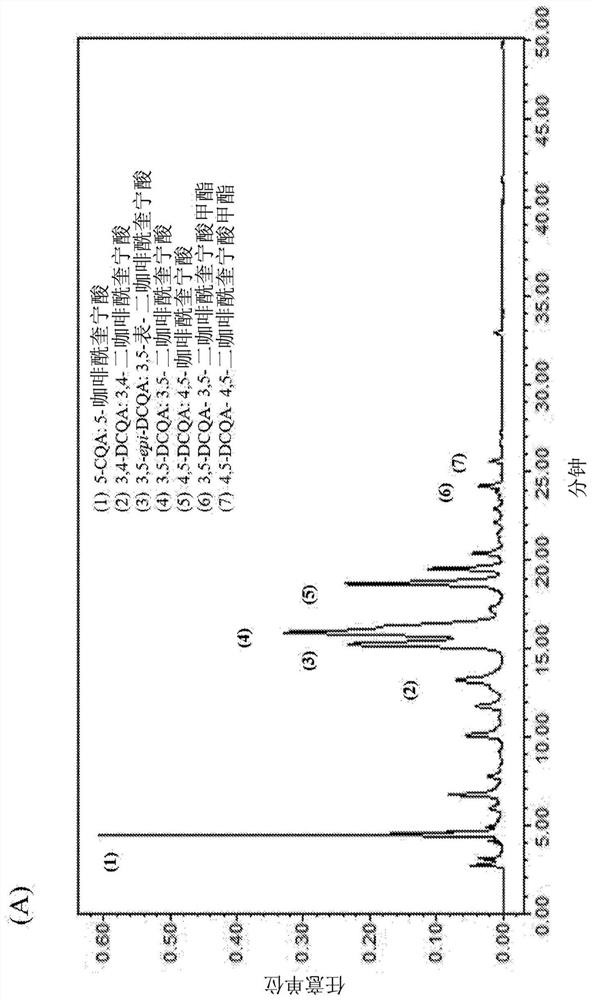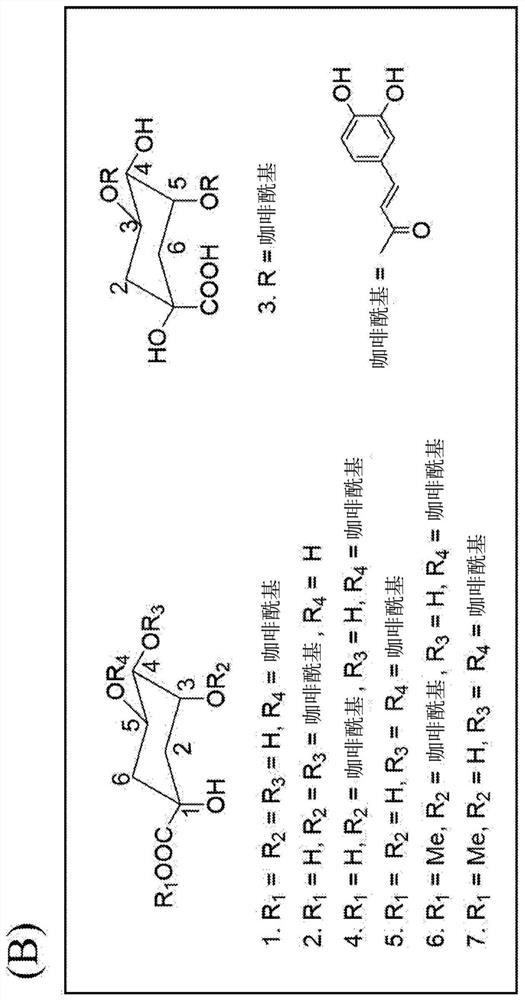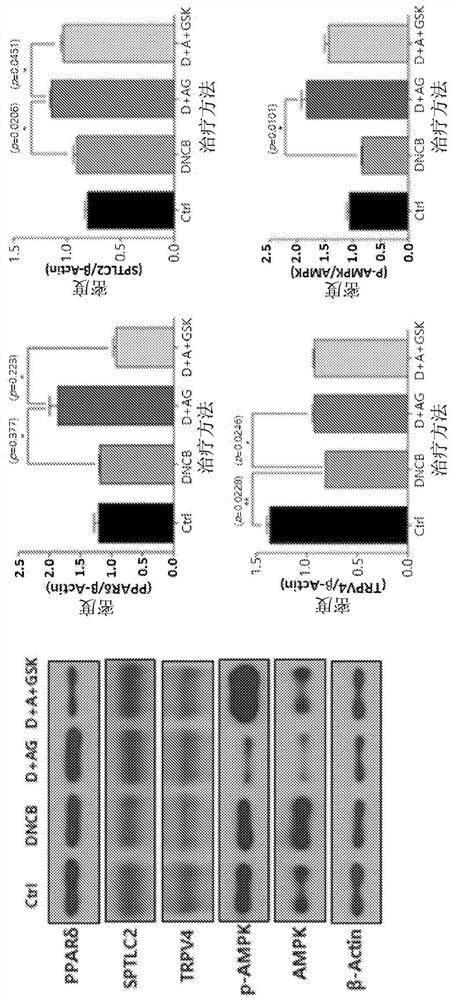Composition for improving skin barrier damage and/or alleviating skin inflammation, containing 3,5-dicaffeoylquinic acid as active ingredient
A technique for caffeoylquinic acid and skin inflammation, which is applied in the field of compositions for improving skin barrier damage and/or skin inflammation alleviation, can solve the problem that the effect of alleviating skin inflammation is not yet understood, and can improve skin barrier damage and alleviate skin inflammation. Effects of skin inflammation
- Summary
- Abstract
- Description
- Claims
- Application Information
AI Technical Summary
Problems solved by technology
Method used
Image
Examples
Embodiment 1
[0094] Embodiment 1: preparation of flax extract
[0095] Purchased flax vegetables (Asterglehni: AG) that were peeled off and dried in Ulleungdo (N37°30', E130°52') in November 2012, and received the honorary title of Prof. Luk Chang-soo (Department of Pharmacology, Kyung Hee University, Seoul) Confirmation, the voucher specimen (971-12A-P) is kept in the plant specimen box of the Korea Institute of Science and Technology.
[0096] To obtain a methanol-soluble extract, minced 12 kg AG was extracted 3 times with 70 L of methanol at room temperature. 2.6 kg of the dry extraction residue were suspended in water and partitioned successively with ethyl acetate. The ethyl acetate fraction was evaporated under reduced pressure to obtain 41.0 g of a residue. The ethyl acetate fraction of AG was analyzed by reversed-phase high-speed liquid chromatography (Waters 1500 series systems) using a 2996 PDA detector (254 nm, Waters, Worcester, MA, USA).
[0097] For separation, 10 μL of sa...
Embodiment 2
[0100] Example 2: Culture of Skin Keratinocytes (HaCaT)
[0101] HaCaT cells (human keratinocytes) were incubated at 37°C in 5% CO 2 In an incubator, culture was carried out in Dulbecco's modified Eagle's medium (DMEM) containing 10% fetal bovine serum (FBS) and 1% antibiotic-antibacterial solution. Replace the cell culture medium with fresh DMEM medium every 48-72 hours. HaCaT cells from passage 5 to 17 were placed in 8-well chamber slides at 1x 10 per well 4 Density of cells, or in 6-well culture plates in DMEM containing 10% fetal bovine serum and 1% antibiotic-antimicrobial, at 1x 10 per well 6 Cell density, spread in well plate. Cells were incubated at 37°C, 5% CO 2 After culturing in the incubator for 24 hours to 48 hours, the medium was replaced with DMEM containing 1% fetal bovine serum. Cells were then treated for 24 hours with DNCB 5 μM (Sigma-Aldrich, Louis, MO) or SDS 30 μM (Sigma-Aldrich) containing AG extract (50 μg) and the PPARδ antagonist GSK0660 (Sigma-A...
Embodiment 3
[0102] Example 3: When treated with flaxseed extract, observe the protein expression of PPARδ, AMPK, SPTLC2 and TRPV4 in HaCaT cells treated with DNCB or SDS
[0103] In order to evaluate the protein expression levels of PPARδ, AMPK and SPTLC2 in HaCaT cells treated with AG and SDS or DNCB, Western blot was performed after treatment according to the treatment conditions in Example 2.
[0104] The protein concentration of the samples was evaluated according to the Coomassie brilliant blue method (Bradford method). 10 μg of the extracted protein was loaded on a 10% sodium dodecyl sulfate (SDS) polyacrylamide gel, and Western blotting was performed on a nitrocellulose membrane for 90 minutes. The membrane was blocked overnight with 5% skim milk and washed 3 times with TBS-T during 10 minutes. The primary antibody was allowed to bind to the membrane for 2 hours at room temperature. The primary antibody to PPARδ was purchased from Abcam. Primary antibodies to whole and phosphory...
PUM
 Login to View More
Login to View More Abstract
Description
Claims
Application Information
 Login to View More
Login to View More - R&D
- Intellectual Property
- Life Sciences
- Materials
- Tech Scout
- Unparalleled Data Quality
- Higher Quality Content
- 60% Fewer Hallucinations
Browse by: Latest US Patents, China's latest patents, Technical Efficacy Thesaurus, Application Domain, Technology Topic, Popular Technical Reports.
© 2025 PatSnap. All rights reserved.Legal|Privacy policy|Modern Slavery Act Transparency Statement|Sitemap|About US| Contact US: help@patsnap.com



